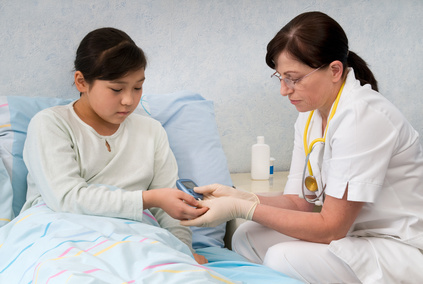Deborah Watkins Bruner Ph.D., RN, FAAN, is a nurse who has always been interested in oncology patients. In an article in the Atlanta Journal-Constitution, she says, “Standing as a young student in the ICU watching patients on monitors at life’s end was my first experience with death and dying. As a nurse, I wondered how to make that experience as best as possible.”
She is now the associate director of cancer outcomes research at Winship Cancer Institute, and also a professor at two different institutions professor of radiation oncology at Emory’s School of Medicine and professor at the Nell Hodgson Woodruff School of Nursing.
She says in the article that back when she started in 1978, there weren’t dedicated cancer units. She would go ahead and spend time with even the most serious cases, sometimes just sitting with them if they had nobody else, saying that she found it a “privelege” to be with them at the end of their lives, even though she was not a hospice nurse.
She has remained concerned with issues of cancer patients beyond the purely medical; quality of life is important, too.
An internationally recognized oncology nurse researcher, Bruner is the first and only nurse to lead one of the National Cancer Institute’s national clinical oncology research groups. She is the principal investigator for the Radiation Therapy Oncology Group’s community clinical oncology program, a consortium that studies how to minimize the side effects of cancer therapies and improve patients’ quality of life.
Bruner has focused her research on improving outcomes for cancer patients and increasing the knowledge about sexual dysfunction after cancer therapies.
“There has been a real lack of attention to the female quality of life and sexual function after treatment for cervical, endometrial and ovarian cancers,” she said. “Those patients have been underserved. They go through tremendous changes after chemotherapy and radiation, and the disparity in the research between males and females concerns me.”
She has been a staunch proponent of the need for patient-reported outcomes in cancer clinical trials. For years, symptoms and side effects have been reported by doctors. While doctors can report accurately and directly on results that show up in lab reports or imaging, that doesn’t tell the whole story.
“There’s not a test for every symptom. Pain is one example where the only real assessment has to come from the patient,” Bruner said. “Nausea, urinary or bowel problems and sexual dysfunction are others.
“Cancer patients will tell their doctors the two or three most important side effects and symptoms resulting from their cancer treatment, but then they will tell the nurse 15 other things that they didn’t want to bother the doctor with. Without a full report from the doctor and the patient, we can’t locate the best therapeutic targets.”
Doctors report adverse symptoms in clinical trials through the CTCAE (Common Terminology Criteria for Adverse Events) form, a widely accepted oncology standard and classification of symptoms. Bruner has helped to develop a patient version — the PRO (patient-reported outcomes)-CTCAE that would serve as a companion report to give clinicians a fuller picture. Her form is being tested in several national trials.
“PRO-CTCAE will give a voice to patients in every clinical trial,” she said. “Previously, we have been seriously under-reporting symptoms, and without accurate reporting we can’t develop the best interventions.”
If a drug causes pain, for example, a way to alleviate the symptom must be found or a different drug needs to be used.
“Nursing science was made to inform this kind of work,” she said. “When I became a gynecological clinical nurse specialist and asked patients about sexual dysfunction, I began to look at the evidence. There was no good research on the patient experience in the ’70s, so I became adamant about providing that evidence.”
Bruner, who is leading two National Institutes of Health studies and one National Cancer Institute clinical trial, is the first nurse to hold a Woodruff professorship at Emory since it was established in 1979.
“Emory is a perfect match for me. The interest in collaboration here is phenomenal and the cancer control work [is] stellar. I’m honored to be a part of it,” she said.
Emory is developing a model that implements new research directly into its cancer survivorship clinics and gathers feedback from its clinics to include in research.
From her experience with oncology patients as a student to her current role in research, Bruner is still listening and helping patients live with cancer.
“Nurses always focus on quality of life,” she said.










